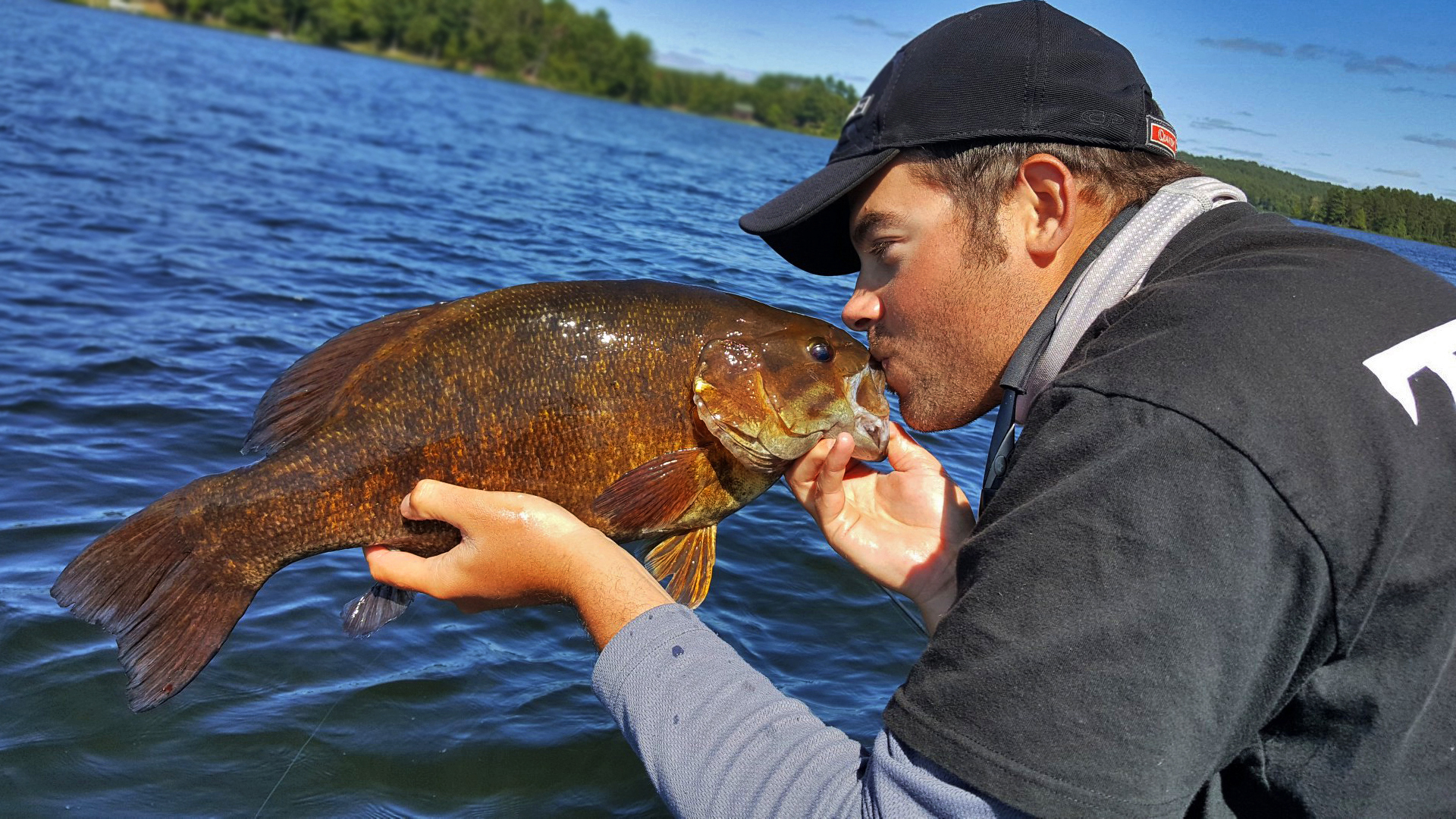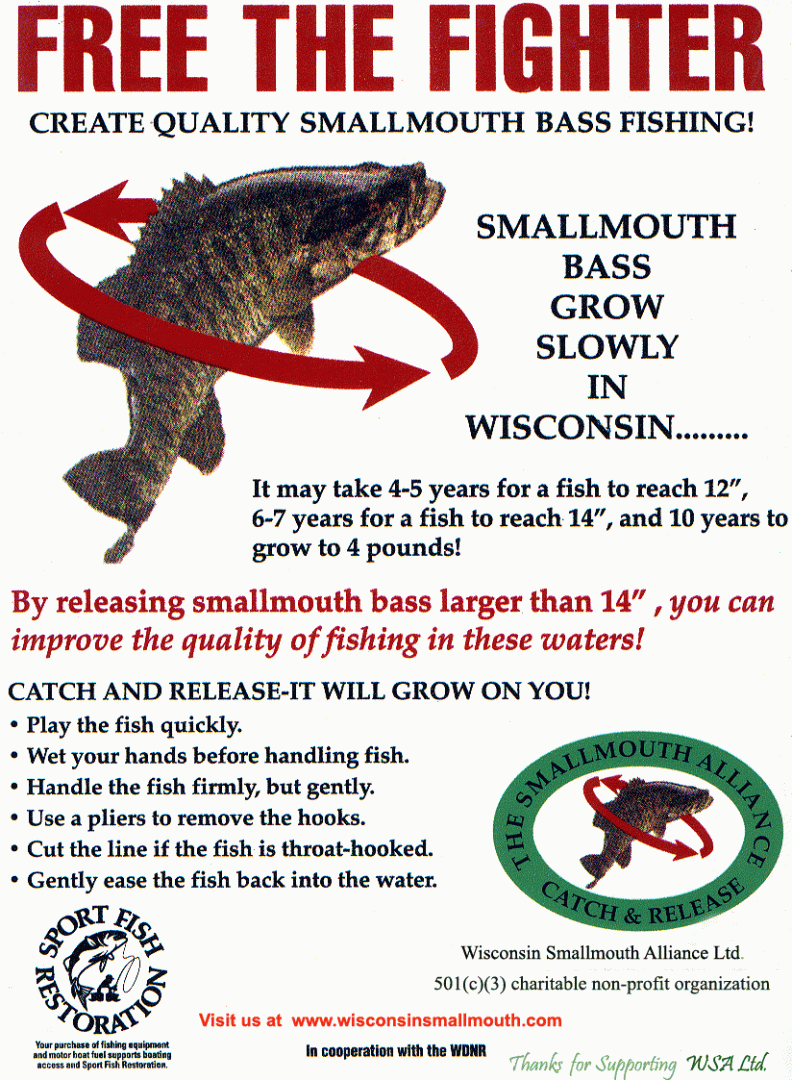SMALLMOUTH CONSERVATION
Studies Published 2003- In-Fisherman Magazine
- Smallmouth bass repeatedly home to the same specific nesting sites year after year, generation after generation.
- DNA testing reveals that this homing tendency is inherited and so strong that male smallmouth bass actually nest with distantly related females.
- Nesting sites are critical and need protection from shoreline disturbance.
- Nesting male bass are predetermined a year in advance of spawning.
- Northern smallmouth bass don’t mature to spawn for the first time until they are between 5 and 9 years of age and between 10 and 16 inches long.
- Big bass are critical for spawning successes. They nest earlier and recuperate faster, and their offspring more likely will survive the winter starvation period.
- Force a smallmouth bass to spawn and its remaining life span becomes less than two years. Such is the cost of reproduction.
- Young-of-the-year smallmouth must grow to about the size of your little finger to survive winter.
- Targeting nesting males, even when a catch-and-release spring season allows it, affects recruitment.
- A negative relationship exists between the time it takes a male to return to its nest after being released and the rate of nest abandonment.
- When a male takes 10 minutes to return to the nest, the eggs and fry are typically preyed upon more than 90 percent of the time, and over 90 percent of such nests are abandoned.
- When males return to the nest in just two minutes, more than half the nests are still deserted.
- Kill a nesting bass and no other male will replace it that year.
- Excellent year classes are the exception not the rule, and winter determines everything. If fall freeze-up is late and spring ice-out arrives early, the winter starvation period is short and survival of yearling bass should be high.
- If cold fall weather arrives early and winter drags on for an eternity, the previous spring’s hatch can be lost.
- Smallmouth bass typically establish summer home ranges and remain faithful to these areas for life.
- The size and area of a summer home range is governed by the availability of food. When food is abundant the summer home range is small. When food is scarce, the summer home range is large.
- High-grade smallmouth bass fisheries teeter on the ability of the population to maintain as many large fish as possible. Fortunately, catch and release of large bass is successful.
- In lakes and rivers, smallmouth home to specific wintering sites in fall, areas often used by huge numbers of bass. Harvesting or moving these fish to other areas can have serious negative consequences.



